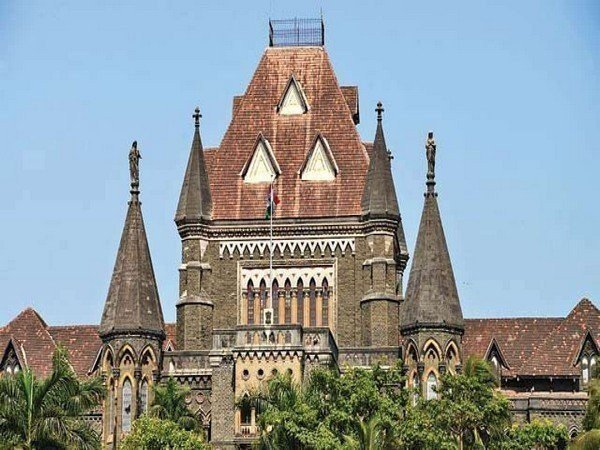
While according paramount importance to following the due process of law in following all procedural requirements in an investigation even by men in uniform, the Bombay High Court has in an extremely commendable, courageous, cogent and creditworthy oral judgment titled Vikram S/o Madhukar Labhe and Ors vs State of Maharashtra in Criminal Writ Petition No. 636/2020 that was delivered finally on December 13, 2022 has severely reprimanded a police officer for seizing a man’s house under Section 102 of the CrPC despite seizure of immovable property not being allowed under the said provision. We see that the Division Bench of Hon’ble Mr Justice Sunil B Shukre and Hon’ble Mr Justice MW Chandwani of Nagpur Bench of Bombay High Court minced no words to clearly state that, “In the name of taking action against criminals, outlaws and offenders in serious crimes, no Investigating Officer can flout the procedural requirements, can breach the limits of law, can openly disrespect the law declared by the highest Court of the land and thus, proclaim himself to be the law unto himself.” There can be no gainsaying that all the men and women in uniform must comply fully with what the Division Bench of the Bombay High Court has laid down so very commendably in this notable case! At the very outset, this leading, learned, laudable and latest oral judgment authored by Hon’ble Mr Justice Sunil B Shukre for a Division Bench of Nagpur Bench of Bombay High Court comprising of himself and Hon’ble Mr Justice MW Chandwani sets the ball rolling by first and foremost putting forth in para 1 that, “Heard. Rule. Rule made returnable forthwith. Heard finally by consent of learned counsel for the parties.” As we see, the Division Bench then states in para 2 that, “Affidavit-in-reply dated 13.12.2022 along with the letter dated 12.12.2022 tendered to the Court across the bar is taken on record. The affidavit-in-reply is marked as “document A” and the letter dated 12.12.2022 is marked as “document B” for identification.” To put things in perspective, the Division Bench then envisages in para 3 that, “The issue involved in this petition – “Whether or not immovable property can be seized by the Investigating Officer in exercise of his power under Section 102 of the Code of Criminal Procedure (“Code” for short), is something, which does not take too long to answer. The issue, in fact, has been answered by the Apex Court in an authoritative manner in it’s judgment delivered by a 3-Judge Bench in the case of Nevada Properties Private Limited Through its Directors Vs. State of Maharashtra and another (2019) 20 Supreme Court Cases 119.” It cannot be glossed over that the Division Bench observes in para 4 that, “The Supreme Court in Nevada Properties (P) Ltd. (supra) has categorically held that seizure of immovable property by Police Officer under Section 102 of the Code is not permissible and if it is to be in countenanced by any Court of law, chaos in society will follow.” While continuing in the same vein, the Division Bench then specifies in para 5 that, “In the main part of the judgment, in paragraph 32, the Supreme Court has observed thus:- “In case and if we allow the police officer to “seize’’ immovable property on a mere “suspicion of the commission of any offence’’, it would mean and imply giving a drastic and extreme power to dispossess, etc. to the police officer on a mere conjecture and surmise, that is, on suspicion, which has hitherto not been exercised. We have hardly come across any case where immovable property was seized vide an attachment order that was treated as a seizure order by police officer under Section 102 of the Code. The reason is obvious. Disputes relating to title, possession, etc., of immovable property are civil disputes which have to be decided and adjudicated in civil courts. We must discourage and stall any attempt to convert civil disputes into criminal cases to put pressure on the other side [See Binod Kumar and others v. State of Bihar and Another) : (2014) 10 SCC 663)]. Thus, it will not be proper to hold that Section 102 of the Code empowers a police officer to seize immovable property, land, plots, residential houses, streets or similar properties. Given the nature of criminal litigation, such seizure of an immovable property by the police officer in the form of an attachment and dispossession would not facilitate investigation to collect evidence/material to be produced during inquiry and trial”.” Quite naturally, the Bench then holds in para 6 that, “From the above referred observations, it would be clear that no immovable property is amenable to seizure under Section 102 of the Code and what is to be seized thereunder is only a movable property. In reaching the conclusion, the Apex Court considered the attributes of immovable property and also the scope and object of Section 102 of the Code. It observed in paragraph 29 that immovable property cannot, in its strict sense, be seized. It further observed that language of Section 102 of the Code does not support the interpretation that a police officer has the power to dispossess a person in occupation and take possession of immovable property in order to seize it. In paragraph 30, the Apex Court further observed that the scope and object of Section 102 of the Code is to help and assist investigation and to enable the police officer to collect and collate evidence to be produced to prove the charge complained of and set up in the charge-sheet. These observations would only show that what could be actually seized by the Police Officer during the course of investigation by exercising his power under Section 102 of the Code of Criminal Procedure is the object, article, piece of paper and the like, which would serve as a piece of evidence for proving the charge against the accused and which is capable of being physically produced before the trial court. Immovable property is something which is incapable of its physical production before the trial court.” To be sure, the Bench then notes in para 7 that, “There are additional reasons given in order to support the conclusions drawn in the main part of the judgment in Nevada Properties (P) Ltd. (supra). These additional reasons are to be found in paragraph 47 of the judgment and the paragraph 47 is reproduced as under:- “47. If the argument of the appellant and the State of Maharashtra is accepted then there was no need for the legislature to have introduced Chapter VIIA. It would also be pertinent to mention that the power of attachment and forfeiture is given to courts and not to police officer. As pointed out in the judgment of my learned brother, if a police officer is given the power to seize immovable property it may lead to an absolutely chaotic situation. To give an example, if there is a physical fight between the landlord and the tenant over the rented premises and if the version of the appellant is to be accepted, the police official would be entitled to seize the tenanted property. This would make a mockery of rent laws. To give another example, if a person forges a will and thereby claims property on the basis of the forged will, can the police officer be given the power to seize the entire property, both movable and immovable, that may be mentioned in the will? The answer has to be in the negative. Otherwise it would lead to an absurd situation which could never have been envisaged by the Legislature.The Power Of seizure in Section 102 has to be limited to movable property”.” As a corollary, the Division Bench then hastens to add in para 8 that, “It would be clear from the above referred observations that by way of an elucidation it is again stated that Section 102 of the Code does not empower the Investigating Officer to seize immovableproperty and it is reiterated that if police officer is given power to seize immovable property, it may lead to absolutely chaotic situation.” Be it noted, the Bench then discloses in para 9 that, “In the instant case, the impugned notice dated 19.02.2015 is in clear violation of the law laid down by the Apex Court, as it goes on to seize immovable property as per the panchanama dated 16.02.2015. The impugned notice does not stop there and it travels further. It also issues an injunction against the petitioner that henceforth the petitioner shall not enter into any sale transaction of the seized immovable property, described in the impugned notice, which is the house property bearing House No.P-47/B, Puranik Layout, Bharat Nagar, Nagpur and in respect of which Ambazari Police Station has registered Crime bearing No.395/2014 for offences punishable under Sections 420, 406 and 409 read with Section 34 of the Indian Penal Code and also Section 3 of the Maharashtra Protection of Interest of Depositors (In Financial Establishments) Act, 1999 (“MPID Act” for short). This house property being an immovable property could never have been seized by the InvestigatingOfficer.Whenthe seizure was questioned for its legality or otherwise before the Court of the learned Additional Sessions Judge, even the learned Additional Sessions Judge did not accept the settled law and refused to apply it to the facts of the case and reached a wrong conclusion when he rejected the application questioning the legality or otherwise of the impugned notice.” Be it noted, the Division Bench notes in para 11 that, “The statement made in paragraph 6 of the affidavit in reply that the Investigating Officer has only informed the Sub Registrar, Nagpur that process of issuance of Notification under Sections 4 and 8 of the MPID Act is only half truth and this can be seen from the letter dated 12.12.2022 which is ‘document B’. The `document B’ not only serves as an intimation to the Sub Registrar but, it also makes a specific request to the Sub Registrar, Nagpur that the entry taken in his record in terms of letter No.446/2015 dated 19.02.2015 be substituted by another entry that the process of issuance of Notification under Sections 4 and 8 of the MPID Act is going on. The request made in letter dated 12.12.2022, in our view, is an interference in the functioning of Sub Registrar, Nagpur and the Investigating Officer, has no business making such a request to him. This letter, Document ‘B’ amounts to usurpation of power of Civil Court and also misuse of powers by the Investigating Officer.” Most significantly, the Division Bench minces no words to hold in para 12 that, “We may state it here that while this Court would support every lawful action of the Investigating Officer which is necessary for bringing to book real culprits, this Court would not uphold any illegal acts of the Investigating Officer and would lay emphasis upon following of procedural requirements of law, which is also the duty of the Investigating Officer. In the name of taking action against criminals, outlaws and offenders in serious crimes, no Investigating Officer can flout the procedural requirements, can breach the limits of law, can openly disrespect the law declared by the highest Court of the land and thus, proclaim himself to be the law unto himself.” No less significant is what is then enunciated in para 13 that, “In the present case, by brazenly throwing to winds the law, Investigating Officer is not giving two hoots about the law or to be precise is trying to assert his superiority over the law of the land. Such an attempt must be thwarted at the earliest opportunity or otherwise servant will become master of law and the master will be consigned to a lifetime of servitude of such servant. We hope that the Investigating Officer shall take a leaf or two from out of what is observed here.” Equally significant is what is then laid down in para 14 that, “In the circumstances, we find that the impugned notice dated 19.02.2015 must not be allowed to continue and so the order of learned Additional Sessions Judge, impugned here, and thus we hold that both of them are illegal and contrary to well settled principles of law.” Most commendably, the Division Bench then directs in para 15 that, “Before parting with the judgment, we find it necessary that the higher police authorities issue appropriate instructions to all the Investigating Officers across the State of Maharashtra for complying with the law of the land discussed earlier and ensure that no immovable propertyisseizedbytheInvestigating Officer in exercise of his power under Section 102 of the Code, although he may take suitable action for it’s attachment in appropriate cases, wherever it is permissible under the law.” Finally, the Bench concludes in para 16 holding that, “In the result, the petition is allowed in terms of prayer clause nos. (a), (b), (c) and (d), which are reproduced as under: “(a) To quash and set aside the order dated 30.09.2020 passed below Exhibit 92 in MPID case No.01.2015 by District and Additional Sessions Judge-11 at Nagpur. (b) To issue appropriate writ and directions in lieu of the letter issued by the Respondent no.2 dated 19.02.2015. (c) To direct the Respondent Authority to remove/detached the attachment/seizure from the house property of the petitioners. (d) To direct the Respondent Authority to restore the possession of the petitioners over the said house property”.” All told, all the men in uniform must always as a rule pay heed in totality to what the Bombay High Court has directed so very clearly. The investigating officers must also always remember the permanent validity of the time tested dictum that, “Be you ever so high, the law is above you.” So it thus merits no reiteration that they must definitely refrain from flouting procedural requirements and seizing house which is not permissible under the law. No denying it!















